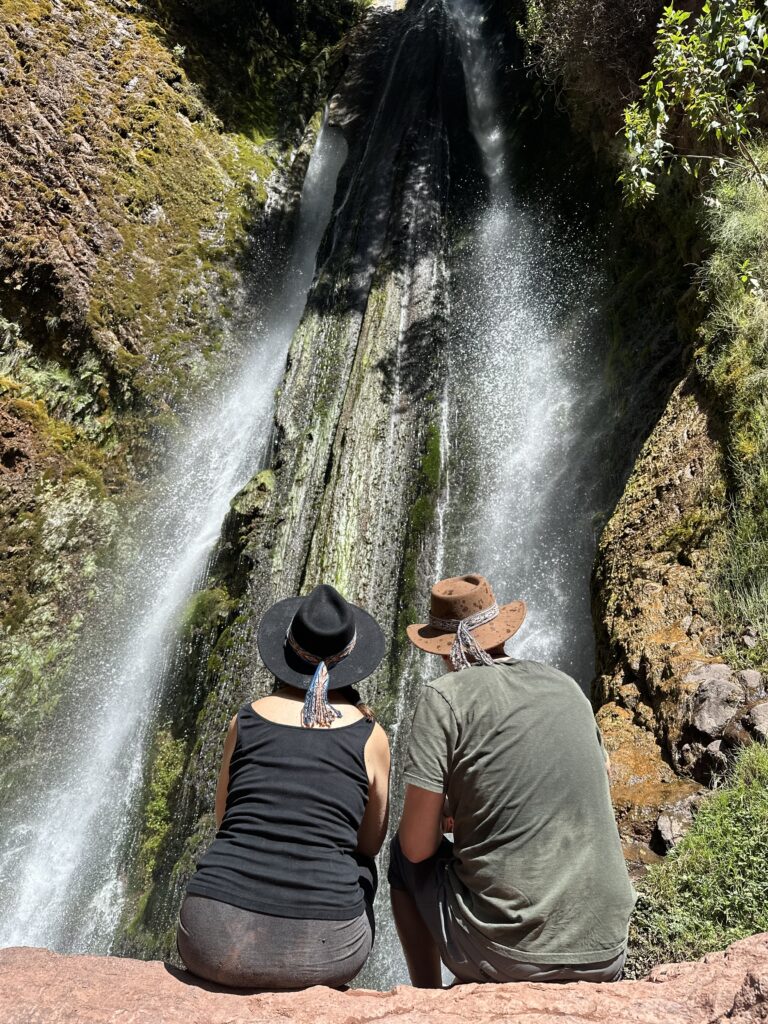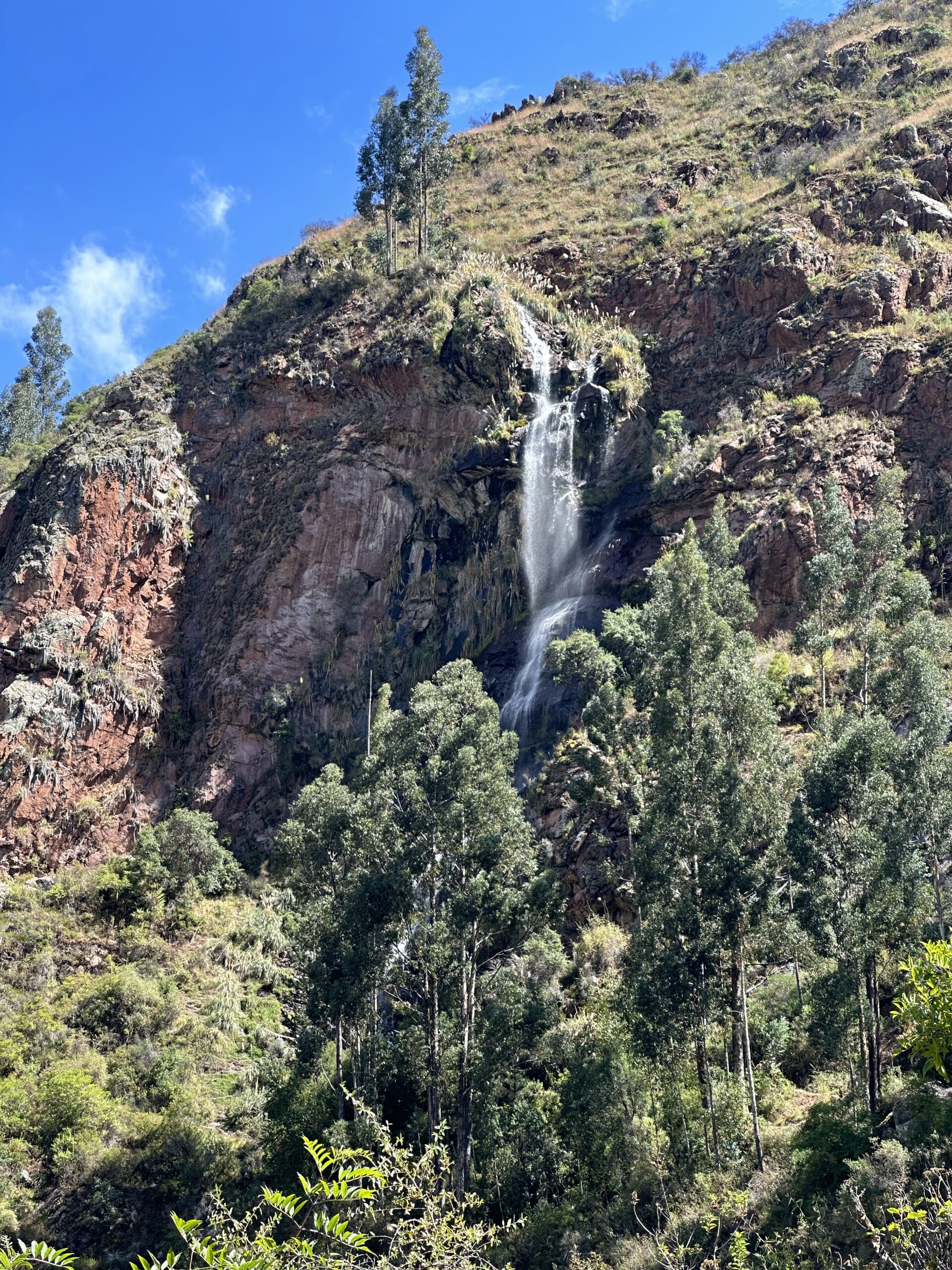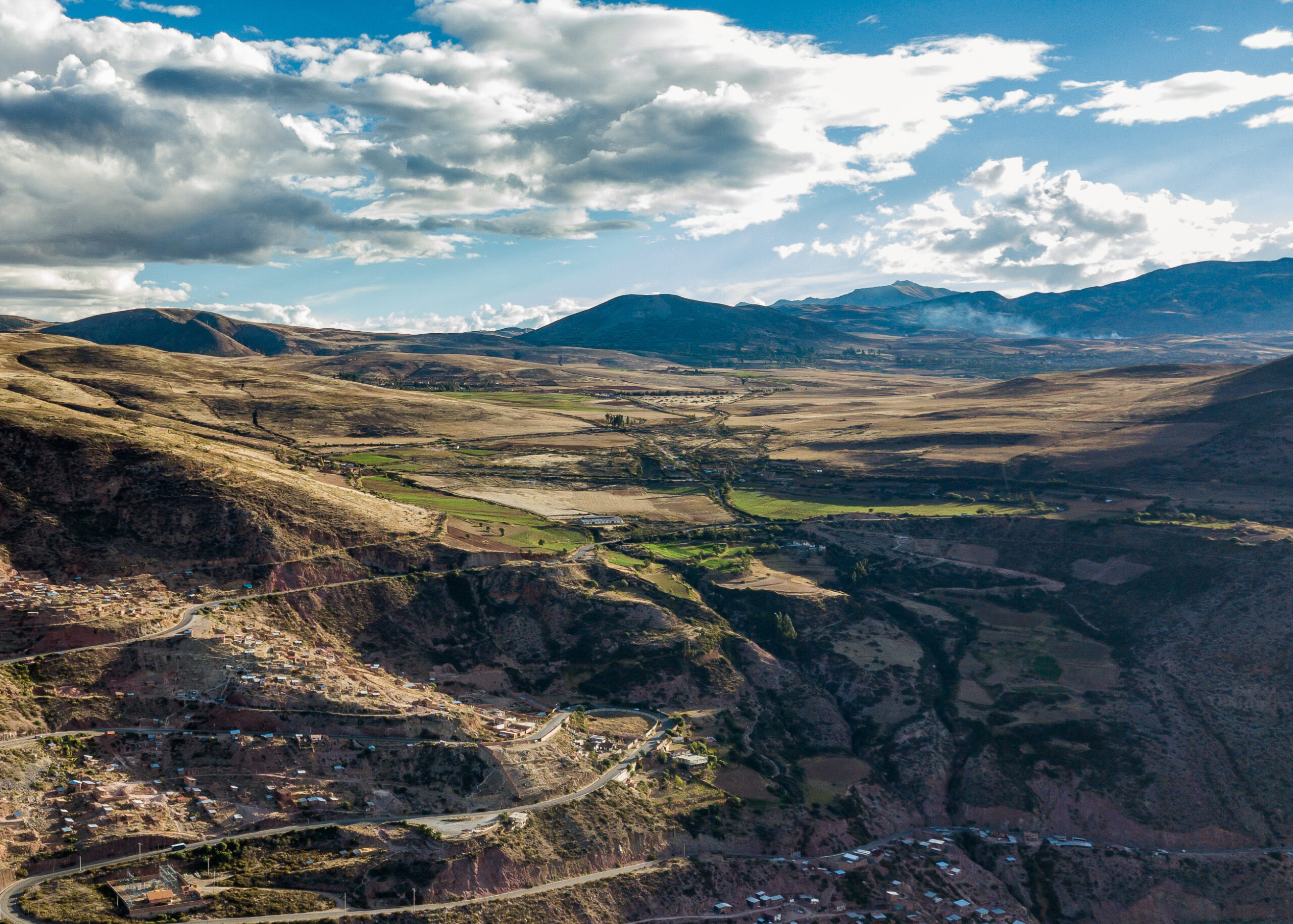The Sacred Valley Waterfalls: Trails of Adventure, Energy, and Living Culture
Home » Blogs Elementor » The Sacred Valley Waterfalls: Trails of Adventure, Energy, and Living Culture
Search
Category
Latest Posts
Andean Weddings in Cusco: A Land Where Love Lasts Forever
The Sacred Lakes of Cusco: Where the Sky Meets the Earth
The Ultimate Guide to Your Spiritual Retreat in Cusco

- Qori Qilka
- October 8, 2025
- No Responses
The Sacred Valley of the Incas, in the Cusco region, is much more than its famous archaeological sites like Ollantaytambo, Pisac, Moray or Chinchero. Hidden among its mountains and ancestral communities are true natural treasures: sacred waterfalls, connected by Inca trails, filled with ancient stories, mythologies, and rituals that still resonate in every drop of water.
These waterfalls are not only beautiful by nature; many were ceremonial spaces, places of spiritual initiation, or rest stops for ancient travelers along the Qhapaq Ñan, the vast road network of the Inca Empire.
We invite you to explore five of the most emblematic waterfalls in the Sacred Valley, each with its own unique energy, history, and beauty.
1. Poqpoq Waterfall through a Living Inca Trail
Located in the district of Chinchero, Poqpoq Waterfall is a magical spot that perfectly blends archaeology, nature, and living history. The journey begins at the Chinchero Archaeological Site, known for its terraces, Inca temples, and colonial church built on an Inca foundation.
To experience this, first take a shared van (called colectivo) from Puente Grau in Cusco with the company Arcoiris, which takes you directly to Chinchero. From there, begin a 1 hour 15-minute descent along the Qhapaq Ñan, a stone-paved Inca trail that follows the path of a ravine.
Along the way, you’ll be surrounded by towering mountains, small streams, and agricultural terraces still used by locals today. Poqpoq Waterfall, with a drop of over 20 meters, is a hidden oasis nestled in native vegetation.
The hike ends in the peaceful village of Urquillos, from where you can take transport back to Calca or Cusco.
- Experience: Hike along the original Qhapaq Ñan, nature and living culture.
- Colectivo price: Between 4 to 8 soles.

2. Perolniyoc Waterfall & Ñaupa Iglesia in Socma
Perolniyoc Waterfall, located in the farming community of Socma, is one of the most visually stunning and spiritually significant. The ascent starts in Socma. First, take a shared van from Calle Pavitos in Cusco to Ollantaytambo (approx. 1h 30min).
From Ollantaytambo, take a taxi to Socma (about 30 min). From there, it’s a 1 hour 20-minute hike to the base of the waterfall.
The trail passes through mountainous landscapes with valley views, small community farms, and native flora. Above the waterfall lies the archaeological site of Raqaypata.
Perolniyoc’s 50-meter waterfall creates a fine mist that refreshes and revitalizes. This spot is considered sacred by locals, and many visitors perform gratitude rituals and meditation here.
Nearby, you’ll also find Ñaupa Iglesia, a mysterious Inca or pre-Inca sanctuary carved into black rock with remarkable precision. It was used as a ceremonial and energetic center, still visited today by shamans, Andean spirituality seekers, and mystic travelers.
- Experience: Spiritual connection, archaeology, and a majestic waterfall.
- Colectivo price: Between 10 to 15 soles.

3. Arín Waterfall, Ancestral Portal of Initiation
Arín Waterfall is located in the Calca district, very close to the town center. Despite its easy access (only a 20-minute walk), this place holds deep spiritual meaning.
To get there, take a colectivo from Cusco to Urubamba from Calle Puputi and ask to be dropped off at the community of Arín, then walk about 25 minutes.
Local oral tradition holds that rituals of spiritual initiation for Inca youths and sages took place here, using the power of the water and the natural environment to purify body and soul. Even today, shamans and spiritual guides use this site for Andean ceremonies, such as Pachamama offerings or energy cleansings.
The waterfall cascades in several layers down a rocky wall, surrounded by eucalyptus trees and dense vegetation, creating a peaceful and reflective atmosphere. The sound of the water, the fresh air, and the natural setting make Arín an excellent spot for those seeking a meditative and energetic experience.
- Experience: Rituals, easy access, and vibrant Andean spirituality.
- Colectivo price: Between 8 to 10 soles.

4. Sirenachayoc Waterfall, Natural Beauty and Colonial Architecture
Sirenachayoc Waterfall is in Lamay, a traditional district in the Sacred Valley known for its local cuisine and trekking routes.
To visit the waterfall, take a colectivo from Cusco to Urubamba (from Calle Puputi), continue to Lamay, and ask to be dropped off at the waterfall entrance.
The trail to the waterfall starts in the town and takes about 30 minutes of moderate hiking. Along the way, you’ll pass a beautiful old hacienda, a colonial house with adobe walls and balconies that transports you back to the 18th century. This blend of nature and history makes it a very appealing route for curious travelers.
Sirenachayoc Waterfall is framed by moss-covered rocks, and during the rainy season it forms a powerful curtain of water descending from the Andean heights. Its name comes from local legends about mermaids or female water spirits that inhabit these areas.
- Experience: Scenic walk, colonial hacienda, local legends.
- Colectivo price: Between 8 to 10 soles.
Recommendations:
If traveling independently:
- Bring an offline map (like Maps.me) and study the route beforehand.
- Carry cash in soles, as there are no ATMs in rural communities.
- Start early to avoid hiking at night.
- Ask locals if you’re unsure, they’re usually friendly and know the area well.
- Take your trash with you and respect local rules (no fires, don’t damage plants or sacred rocks).
If going with a tour agency or guide:
- Make sure the agency is authorized and has good reviews.
- Ask if the tour includes free time, a certified guide, and visits to extras like Ñaupa Iglesia or colonial haciendas.
- If you’re interested in spiritual experiences, look for agencies specializing in conscious tourism or spiritual retreats.
- Confirm if the tour includes insurance, meals/snacks, trekking poles, and round-trip transport.
Tips for Visiting the Sacred Valley Waterfalls
- Best season: April to November (dry season).
- Bring: Trekking shoes, walking sticks, water, hat, sunscreen, and snacks.
- Respect: Local culture, sacred spaces, and nature.
- Local guides: Hiring a local guide is highly recommended to understand the deeper history of each site.
- Environmental care: Don’t litter, and avoid using drones without permission in archaeological areas.

Conclusion: A Journey Through Water, History, and Spirit
The Sacred Valley waterfalls are more than tourist destinations — they are gateways to a different way of traveling: slower, more conscious, and deeply connected to the spirit of the Andes. Each trail invites you to walk, reflect, and discover not only stunning landscapes, but also the ancient legacy of Inca culture that still lives on in every corner.
If you’re planning your next trip to Cusco and are looking for a more authentic and enriching experience, don’t hesitate to include one of these sacred waterfalls in your itinerary.
Etiquetas populares
Search
Category
Latest Posts
Andean Weddings in Cusco: A Land Where Love Lasts Forever
The Sacred Lakes of Cusco: Where the Sky Meets the Earth
The Ultimate Guide to Your Spiritual Retreat in Cusco
